If you’ve been poking around the Internet for a new mattress, chances are you’ve come across Casper and Tuft & Needle, two of the most popular bed-in-a-box brands on the market. While both of these companies make fantastic beds, only one of them can be right for you. So… which is it?
Could it be the Casper original mattress, with its balanced foam approach, gentle Zoned Support, and hearty bounce? Or mayhaps the Tuft & Needle original, a mattress as well-known for its simplicity as for its affordability? Only time (and a quick pass through this comparison) will tell.
So let us be off to figure out which will reign supreme! Continue reading my Casper vs Tuft & Needle mattress comparison to find out.
Tuft & Needle vs Casper
Product
Firmness
Score
Tuft & Needle vs Casper Mattress Overview
Here’s a brief overview of the strong points of the Tuft & Needle and Casper, as well as which type of sleepers are best suited for them.
| Tuft & Needle is best for… | Casper is best for… |
| Back sleepers | Couples |
| Couples | Seniors |
| Budget shoppers | Back pain |
Tuft & Needle vs Casper Video Review
Need a quick rundown of each mattress and who I recommend them for? Check out my Tuft & Needle vs Casper video review below.
Tuft & Needle vs Casper: Top Similarities
- Materials: Both Tuft & Needle and Casper are all-foam mattresses.
- Edge Support: Both beds have decent edge support for all-foam mattresses. I could see both options being a good choice for couples who enjoy using the whole mattress and prefer to have a memory foam bed.
- Responsiveness: The Casper and Tuft & Needle mattresses are surprisingly responsive for memory foam beds. Combination sleepers should be able to quickly switch between different positions on these mattresses.
Tuft & Needle vs Casper: Top Differences
- Support: The Casper features a Zoned Support system that makes it firmer at the shoulders and softer at the hips.
- Price: The Tuft & Needle is cheaper than the Casper mattress. At retail price, the Tuft & Needle is about $400 cheaper than the Casper original mattress.
- Construction: The Tuft & Needle is made of two foam layers, while the Casper is made with three foam layers.
Tuft & Needle vs Casper: Construction & Feel Differences
Now it’s time to focus on what the Tuft & Needle and Casper mattresses actually feel like. I’ll evaluate various factors, including firmness, pressure relief, bounce, and sinkage. Before we begin, I’d like to note that these factors are highly subjective and can vary significantly based on individual body size, shape, and weight.
What’s the Firmness Difference?
It’s important to understand that, when it comes to mattresses, firmness isn’t a one-size-fits-all scenario. Your size, weight, shape, and other factors all determine your ideal level of firmness. So your preferences might not be the same as mine. When testing a mattress for firmness, we try to capture the variance different people might feel. I test every bed with colleagues of various body shapes, types, and sizes, then average those responses to determine the final firmness score.
My colleagues and I gave the Casper mattress a 7 out of 10 on the firmness scale, putting it slightly above the industry standard. We rate firmness on a scale of 1 to 10 with 1 being the softest and 10 being the firmest. For reference, the industry standard for a medium-firm mattress is a 6.5 on the firmness scale. On the other hand, I gave the Tuft & Needle a 6 out of 10 on the firmness scale. After testing this mattress, I felt it was a bit softer than the industry standard.


What Does Each Mattress Feel Like?
I thought the Casper had a balanced foam feel that provided both pressure relief and support. The combination of latex, memory foam, and high-density poly foam brings targeted relief to pressure points across the body. I felt this bed was gentle yet supportive enough to work for a wide range of sleepers. I particularly like it for back sleepers, especially those who struggle with back pain in the hips and lower back.
On the other side, the Tuft & Needle has a plush cover with a traditional memory foam feel. I felt my hips sink into the mattress a little bit while the rest of my body felt elevated on top of the bed. I really liked how the foam filled in the space near my lower back, and I could see people struggling with back pain finding a lot of relief here. Overall, I thought this bed did a great job supporting me for how simple it is.
How Does The Construction Differ?
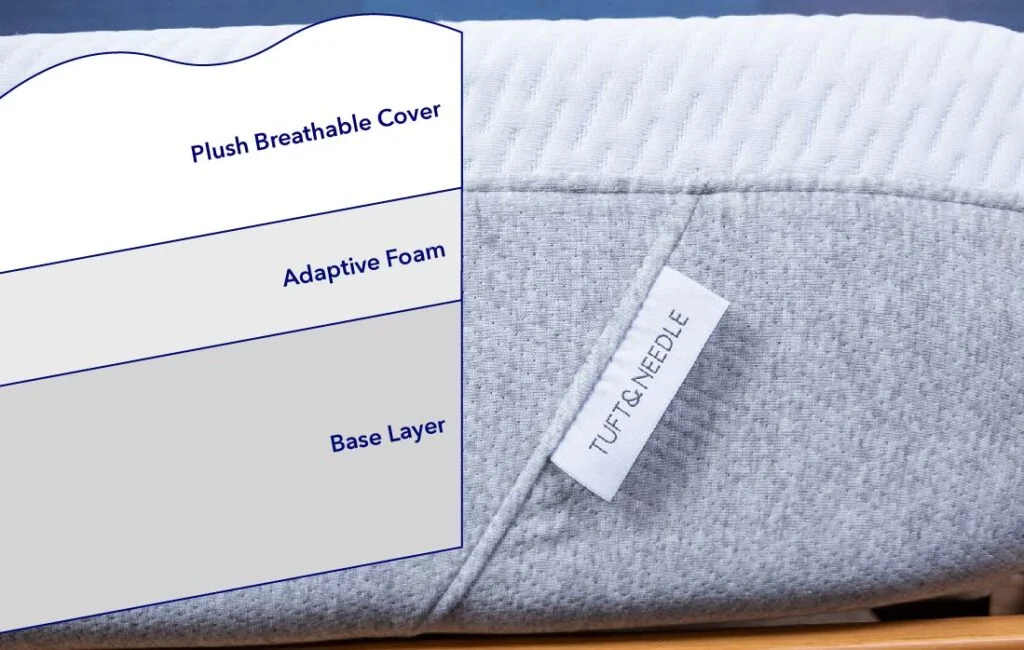
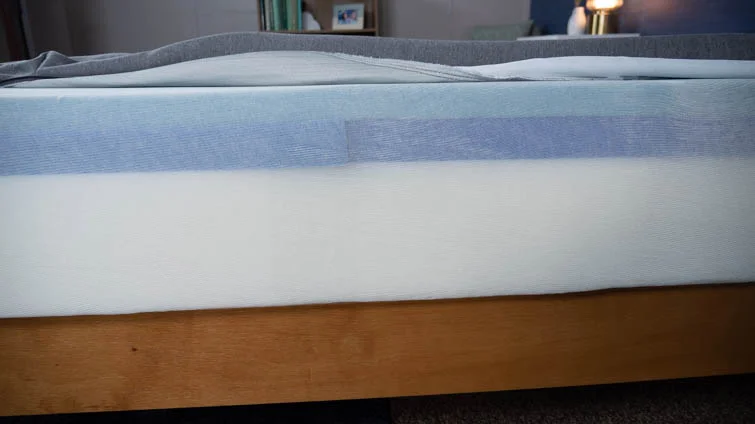
Tuft & Needle vs Casper Per Body Type
Every mattress will feel different to sleepers depending on individual attributes and preferences, such as body weight and sleeping position. Up next, I’ll compare how the Tuft & Needle and Casper mattresses perform for various sleepers.
Tuft & Needle Body Weight Scale
| Body Weight | Side | Back | Stomach |
|---|---|---|---|
| Light (under 130 lbs) | unpleasant | excellent | excellent |
| Average (130-230 lbs) | good | excellent | unpleasant |
| Heavy (over 230 lbs) | unpleasant | unpleasant | unpleasant |
| Body Weight: Light (under 130 lbs) | |
|---|---|
| Side Sleeper | unpleasant |
| Back Sleeper | excellent |
| Stomach Sleeper | excellent |
| Body Weight: Average (130-230 lbs) | |
| Side Sleeper | good |
| Back Sleeper | excellent |
| Stomach Sleeper | unpleasant |
| Body Weight: Heavy (over 230 lbs) | |
| Side Sleeper | unpleasant |
| Back Sleeper | unpleasant |
| Stomach Sleeper | unpleasant |
Casper Body Weight Scale
| Body Weight | Side | Back | Stomach |
|---|---|---|---|
| Light (under 130 lbs) | unpleasant | good | good |
| Average (130-230 lbs) | good | good | unpleasant |
| Heavy (over 230 lbs) | unpleasant | unpleasant | unpleasant |
| Body Weight: Light (under 130 lbs) | |
|---|---|
| Side Sleeper | unpleasant |
| Back Sleeper | good |
| Stomach Sleeper | good |
| Body Weight: Average (130-230 lbs) | |
| Side Sleeper | good |
| Back Sleeper | good |
| Stomach Sleeper | unpleasant |
| Body Weight: Heavy (over 230 lbs) | |
| Side Sleeper | unpleasant |
| Back Sleeper | unpleasant |
| Stomach Sleeper | unpleasant |
Tuft & Needle vs Casper Comparing Mattress Performance
Temperature
Several factors contribute to a mattress’s cooling ability. First and foremost, I consider its construction. Since both mattresses are hybrid models, there’s plenty of room for air to flow through them and keep them cool.
I initially had low expectations for the Tuft & Needle’s cooling abilities because it is an all-foam mattress. However, the cooling gel and graphite-infused layer surprised me. To get a sense of how this bed might perform overnight, I measured its surface temperature with a thermal gun after sleeping on it for 15 minutes. Surprisingly, it only increased by 6 degrees, which is great for a memory foam bed.
The Casper performed well here, too. After lying on the Casper for a few minutes, its baseline temperature increased by 8.4 degrees. This is still pretty good, keeping in mind that foam mattresses have a harder time staying cool than hybrid or innerspring mattresses. For more cooling mattresses, check out our best cooling mattress roundup.
Motion Isolation
Next, let’s chat about motion isolation. Motion isolation refers to how likely you are to feel your bedmate’s movements throughout the night. If you share your bed with a partner or pet, you may be disturbed by their movement on the other side of the bed. A mattress with low motion transfer can isolate motion and prevent you from feeling it on your side.
To ensure that I’m not just speaking from my experience, I perform a few tests to determine if a bed is good at isolating motion. One of those tests consists of dropping a steel ball from various heights and measuring the disturbance it causes using a seismometer.
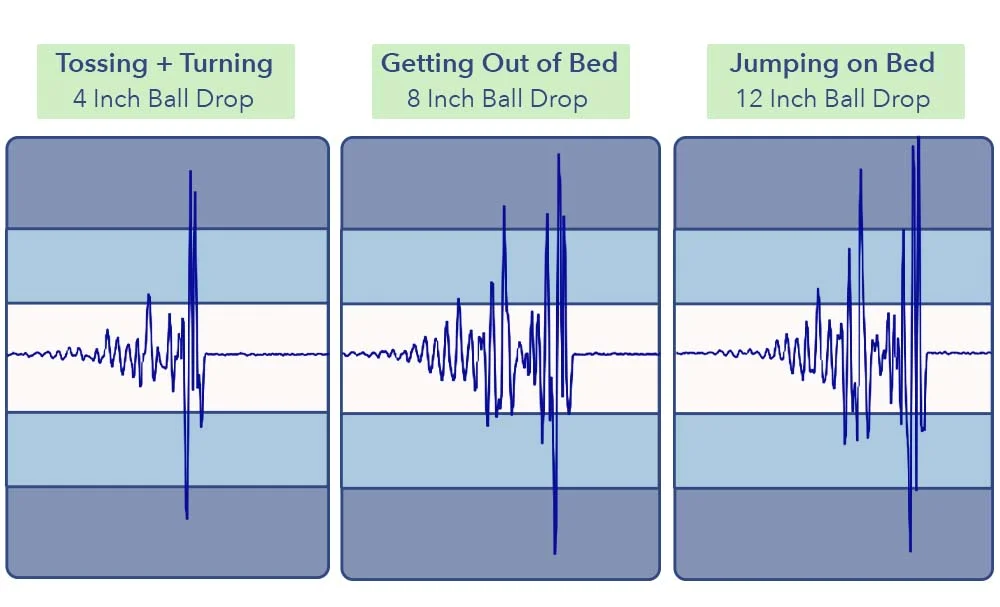
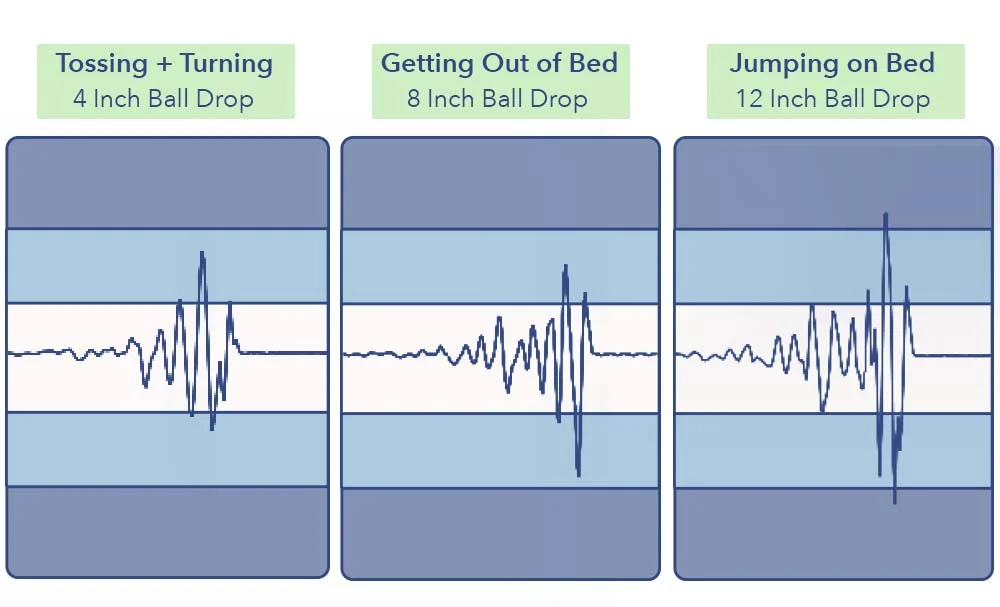
During this test, I found a clear winner in the Casper mattress. The Tuft & Needle is a thinner mattress, meaning it will inevitably transfer more motion to either side of the bed. The Casper is thicker, and its traditional memory foam does a great job of isolating those smaller movements that tend to travel from the impact site.
Edge Support
When it comes to edge support, I would say the Casper mattress has a slight advantage here. I wouldn’t recommend either bed to folks with mobility issues, as they will likely experience too much sinkage sitting on the edges and corners of the mattress. The Casper is on par with other memory foam mattresses; I felt plenty of support while lying along the edge but noticed some sinkage while sitting on it.
The Tuft & Needle performed about the same; however, it is a thinner bed than the Casper mattress. Heavier sleepers will likely experience more sinkage on the Tuft & Needle and hit the platform beneath them because of how thin the bed is.
Pressure Relief
Both beds did well on our pressure map test for back sleepers. However, I would not recommend either bed to side sleepers with joint pain.
For this test, we use a specialized mat to measure how much pressure the materials are putting on different parts of the body. The mat then creates a graphic or “map” of the body using color-coded imagery. Areas with low pressure buildup are blue and green, and areas with high pressure buildup are yellow and red.
As you can see on the map below, there is a lot of blue on the back, indicating that the Tuft & Needle mattress is good at relieving pressure. However, there is some red around the shoulders. Based on these results, I would recommend this mattress to folks with sensitive shoulders.

Similarly, there is a good amount of green and blue on the pressure map below, meaning the Casper had good test results. Again, you can see there is more pressure buildup for side sleepers, especially around the shoulders.
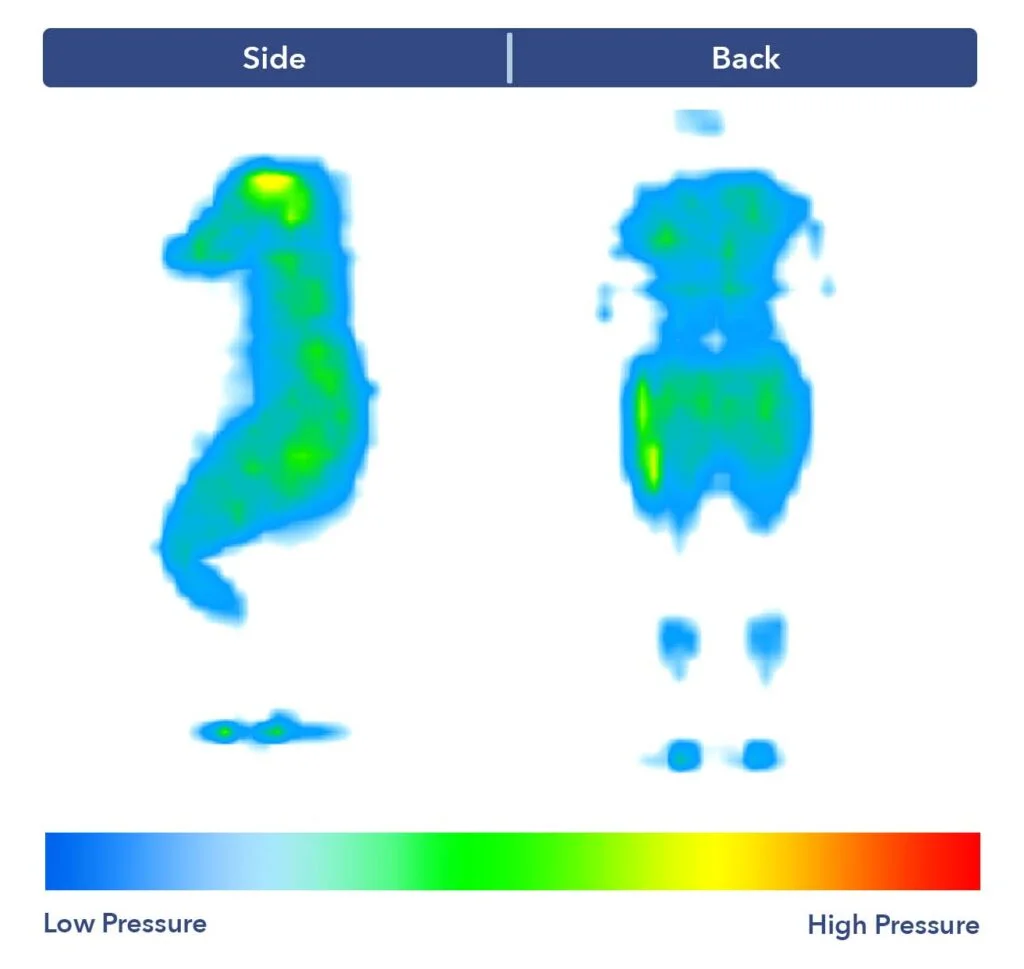
Pain Relief
The results of the pressure relief test can indicate whether these mattresses aid in reducing pain in specific areas. I think the Tuft & Needle and Casper are good options for most back sleepers. However, side sleepers, especially those with sensitive joints, should take a look at our best mattresses for side sleepers.
Durability
I would say the Casper is more durable than the Tuft & Needle. The Casper mattress is slightly thicker than the Tuft & Needle, with three layers of memory foam instead of two. It also has a layer of high-density polyfoam, which helps provide shape and stability to the structure.
Meanwhile, the Tuft & Needle only has two layers of foam, with the base layer doing most of the work to keep things sturdy. On the plus side, These foams are CertiPUR-US certified, so they should be durable, long-lasting materials, and free from toxins and other chemicals.
The edge support on both beds is just okay, so they may sag over time. However, I think the Casper has a slight edge here because it has more layers than its thinner rival and a supportive base to help maintain its shape.
Company Policies
Tuft & Needle Policies
- Trial Period – 100 nights
- Shipping – Free shipping minus HI and AK
- Mattress Warranty – 10-year warranty
Casper Policies
- Trial Period – 100 nights
- Shipping – Free
- Mattress Warranty – 10-year warranty
Tuft & Needle Customer Service Rating
- Stellar: Tuft & Needle has a variety of customer service options listed on their support page, including a FAQ, a contact form, and a phone number that’s open every day during business hours. I called the number and was able to get in touch with a representative straight away. The representative was friendly and helped answer all of my questions. The representative even offered to stay on the line and help me place an order.
Casper Customer Service Rating
- Stellar: When contacting Casper’s customer service, I was immediately paired with a helpful agent who answered all my questions about Casper’s warranty thoroughly and transparently. When I did ask a question, it was answered politely and in detail.
Comparing Tuft & Needle vs Casper Price
When deciding between the Tuft & Needle and Casper mattresses, your decision may come down to price. Let’s take a peek at how much these beds cost in our pricing chart. Keep in mind that you can always use our Casper mattress coupon code for a great deal on your next purchase.
Prices listed will be before discount or offer for each size.
| Size | Tuft & Needle | Casper |
| Twin | $645.00 | $895.00 |
| Twin XL | $695.00 | $995.00 |
| Full | $795.00 | $1,195.00 |
| Queen | $895.00 | $1,295.00 |
| King | $1,295.00 | $1,695.00 |
| California King | $1,295.00 | $1,695.00 |
Other Tuft & Needle and Casper Mattress Comparisons
Wondering how the Tuft & Needle and Casper stack up to some of their competitors from other online mattress companies? Take a look at some of our other comparisons below.
Tuft & Needle vs
- Tuft & Needle vs Purple
- Tuft & Needle vs Puffy
- Tuft & Needle vs Tempur-Pedic
- Tuft & Needle vs Casper vs Leesa vs Saatva
- Tuft & Needle vs Yogabed
- Tuft & Needle vs eLuxurySupply
Casper vs
- Casper vs Helix
- Casper vs Leesa
- Casper vs WinkBeds
- Casper vs DreamCloud
- Casper vs Endy
- Casper vs Lull
- Casper vs Puffy
- Casper vs Layla
- Casper vs Brooklyn Bedding
- Casper vs Saatva
- Casper vs GhostBed
Comparing Other Mattress Models
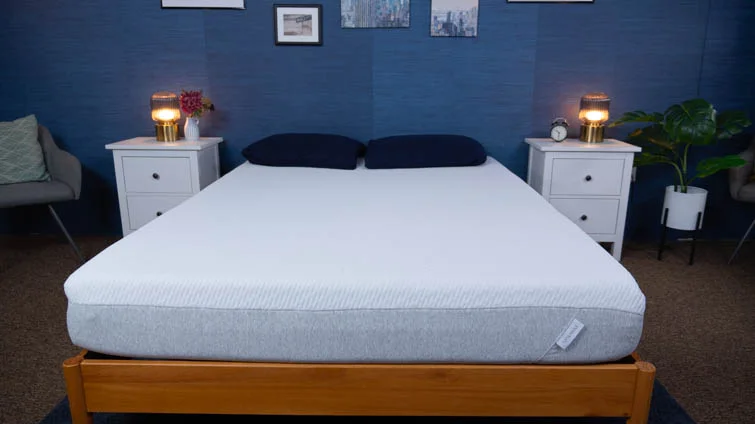 | 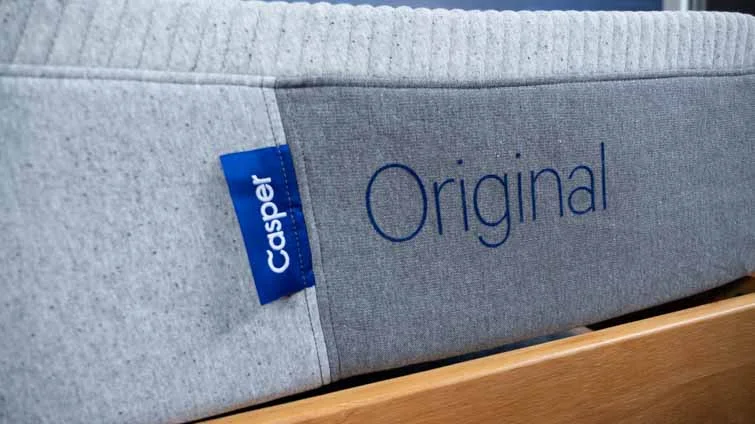 | 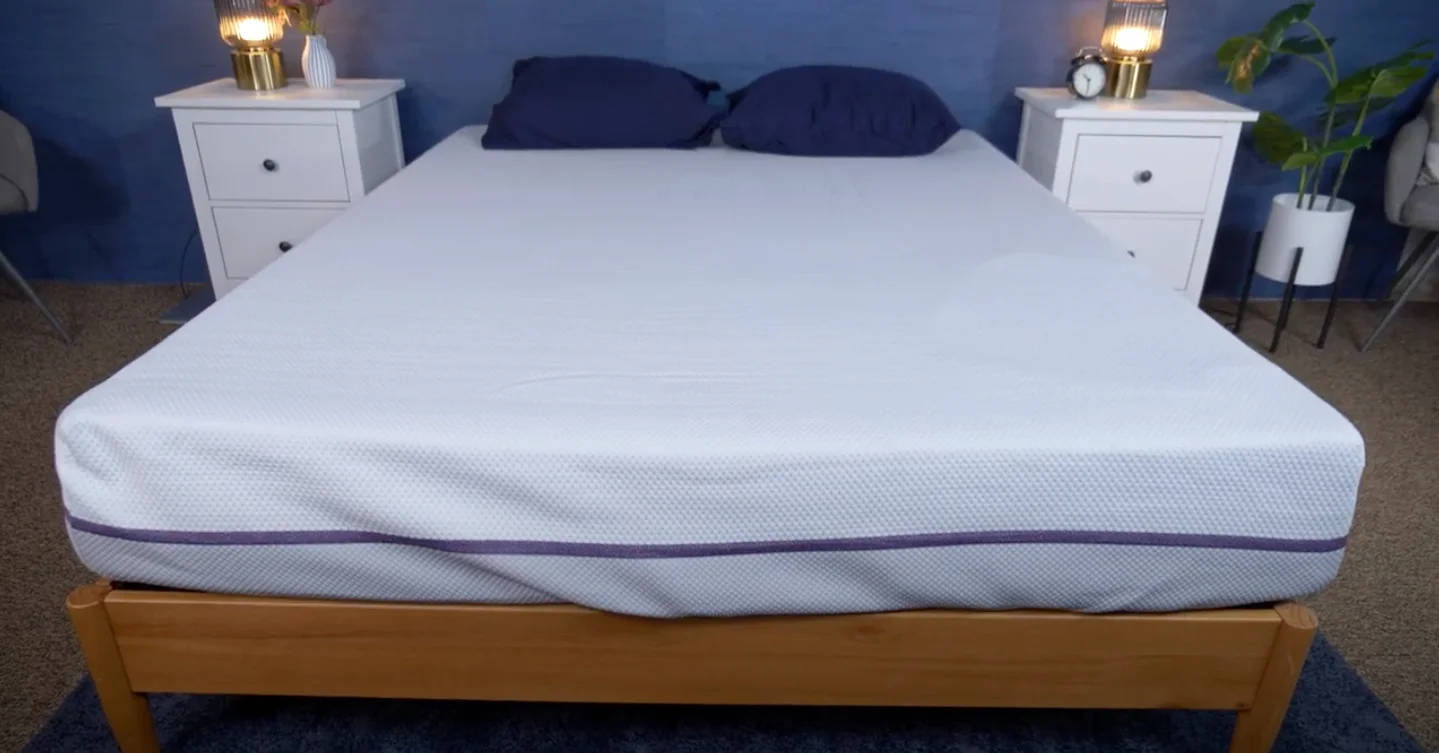 |  | 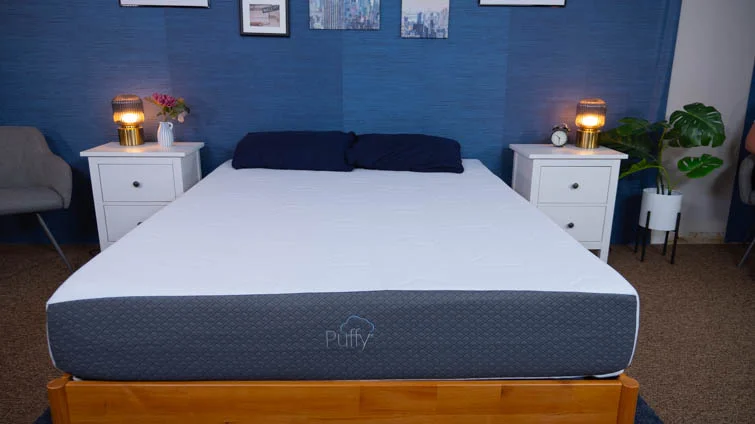 |  | 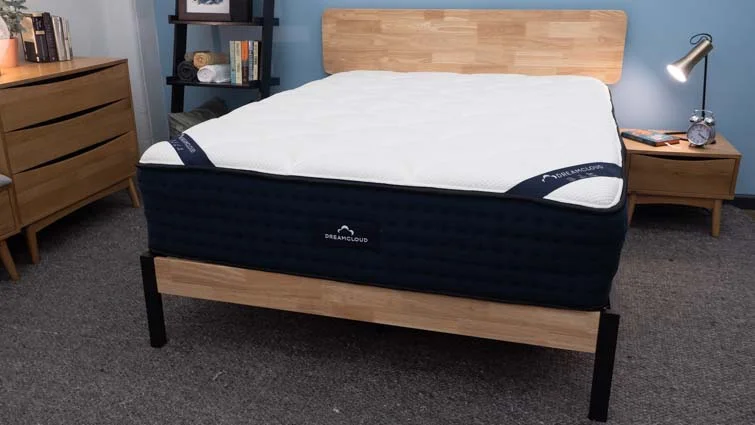 | 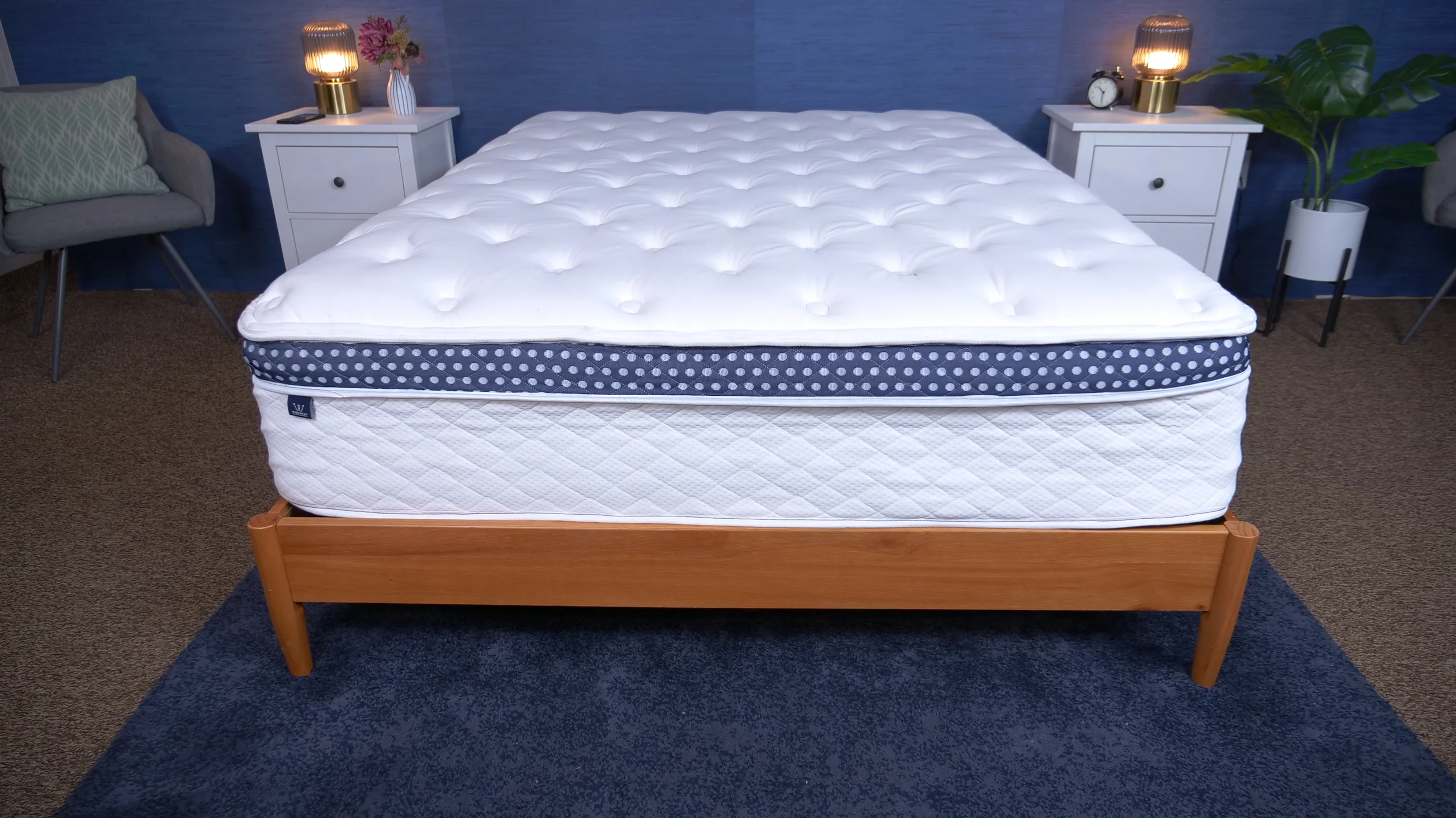 | |
| Tuft & Needle Mattress | Casper The One Mattress | Purple Mattress | Saatva Classic | Puffy Cloud Mattress | Helix Midnight Mattress | DreamCloud Original Mattress | WinkBed Mattress | |
| Rating | ||||||||
| Firmness | Firm: 7/10 | Firm: 7/10 | Firm: 7/10 | Multiple firmness options | Medium-soft: 6/10 | Medium-firm: 6.5/10 | Medium-firm: 6.5/10 | Firm: 7/10 |
| Material | Foam | Foam | Hybrid | Innerspring | Foam | Hybrid | Hybrid | Hybrid |
| Cooling | — | — | — | — | — | |||
| Best For | Back Sleepers | Back Pain, Seniors, Couples | Side Sleepers, Back Sleepers, Stomach Sleepers | Back Sleepers, Stomach Sleepers, Hot Sleepers, Back Pain, Seniors | Side Sleepers, Back Sleepers, Back Pain, Kids | Side Sleepers, Back Sleepers, Couples | Back Sleepers, Stomach Sleepers, Hot Sleepers, Seniors | Side Sleepers, Back Sleepers, Stomach Sleepers, Hot Sleepers, Back Pain |
Tuft & Needle vs Casper Frequently Asked Questions
What are the return policies for the Tuft & Needle and Casper mattresses?
Both brands offer a 100-night sleep trial. If you decide you don’t like your mattress within this period, you can return it for a full refund (minus some shipping costs).
How do the Tuft & Needle and Casper ship?
Both mattresses ship for free, but the Tuft & Needle does not offer free shipping to Hawaii and Alaska.
Is the Tuft & Needle softer than the Casper mattress?
Yes, the Tuft & Needle is not softer than the Casper mattress. We gave the Tuft & Needle a 6 out of 10, with 1 being the softest and 10 being the firmest. The Casper is a little on the firmer side, scoring a 7 out of 10 on the same scale.
Are the Tuft & Needle and Casper mattresses good for hot sleepers?
The Tuft & Needle did better than the Casper on our cooling tests. However, hot sleepers will likely get too toasty on either bed. I’d recommend one of our best cooling mattresses instead.
What is a sleep trial?
A sleep trial is the amount of time a company allows for you to sleep on the mattress before becoming ineligible for returns. Within the trial period, you can return or exchange the mattress at no additional cost. Most mattress companies will not accept returns until 30 days after delivery so you can give the mattress a fair shot and have time to get used to it.
Now that the review is coming to a close, let’s cover some of my favorite callouts, as well as a couple of complaints.
As we finish this comparison, I’ll leave you with what I like most about the Casper and point out some of my complaints.
Our Review Process
Our Sleepopolis reviewers personally test each mattress. We start by unboxing the mattress to figure out how difficult (or easy) it is to get the mattress from the box to the bed. Then, we spend time laying on the bed in different positions, taking time to assess it on our backs, stomachs, and sides. Next, we perform our Sleepopolis tests, using specialized tools to measure qualities like motion transfer, bounce, and pressure relief. Our last step is to open up the mattress and take a look at each layer. These steps allow us to give our final verdict on the mattress.

























